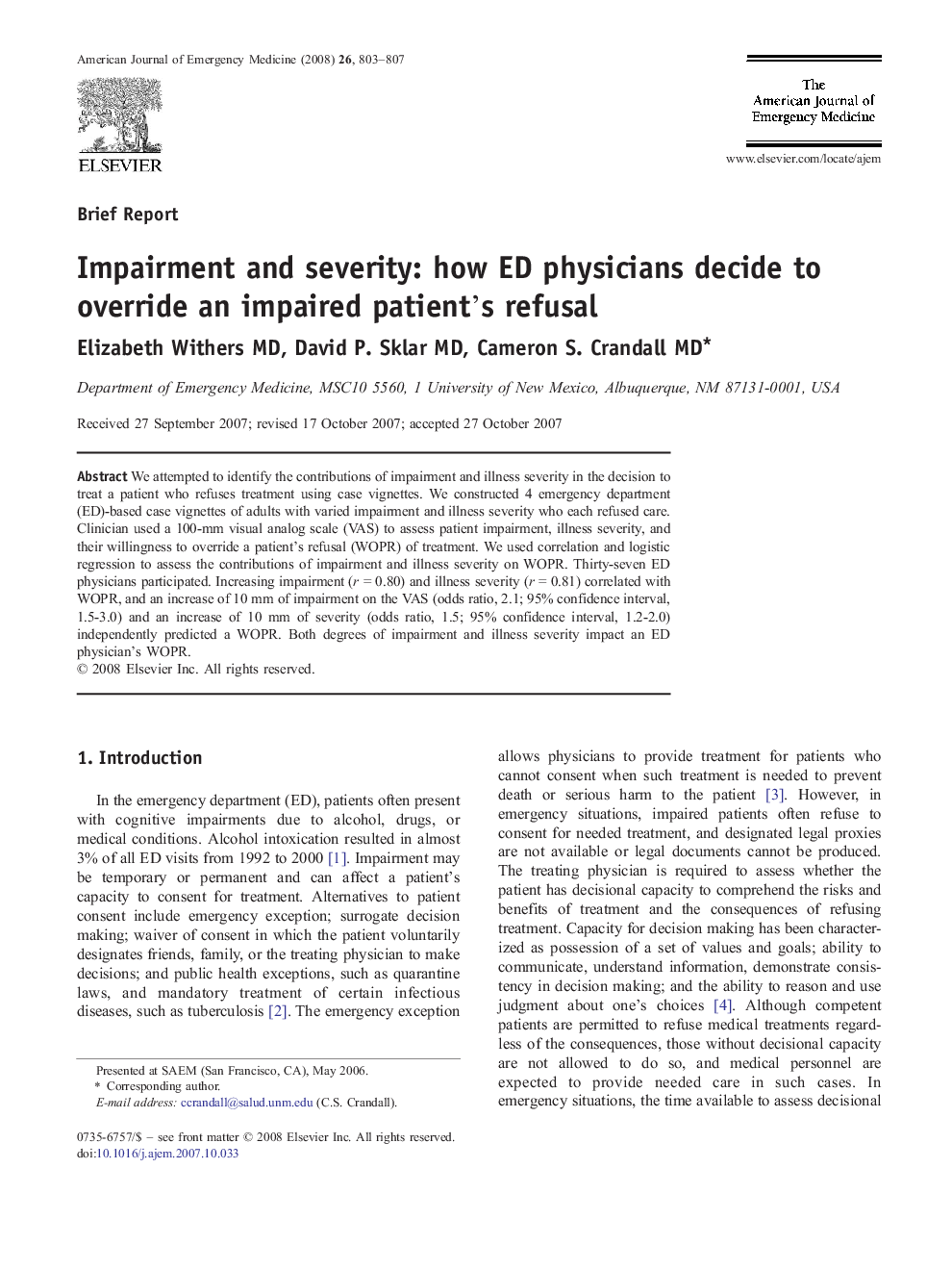| Article ID | Journal | Published Year | Pages | File Type |
|---|---|---|---|---|
| 3227222 | The American Journal of Emergency Medicine | 2008 | 5 Pages |
We attempted to identify the contributions of impairment and illness severity in the decision to treat a patient who refuses treatment using case vignettes. We constructed 4 emergency department (ED)-based case vignettes of adults with varied impairment and illness severity who each refused care. Clinician used a 100-mm visual analog scale (VAS) to assess patient impairment, illness severity, and their willingness to override a patient's refusal (WOPR) of treatment. We used correlation and logistic regression to assess the contributions of impairment and illness severity on WOPR. Thirty-seven ED physicians participated. Increasing impairment (r = 0.80) and illness severity (r = 0.81) correlated with WOPR, and an increase of 10 mm of impairment on the VAS (odds ratio, 2.1; 95% confidence interval, 1.5-3.0) and an increase of 10 mm of severity (odds ratio, 1.5; 95% confidence interval, 1.2-2.0) independently predicted a WOPR. Both degrees of impairment and illness severity impact an ED physician's WOPR.
